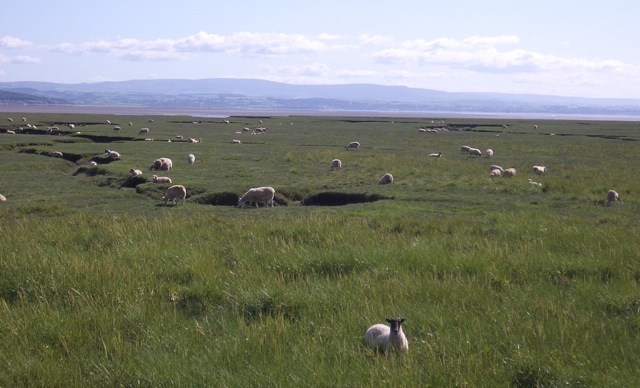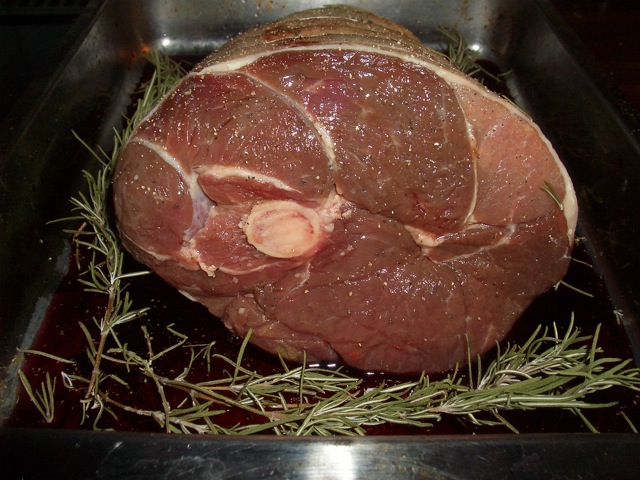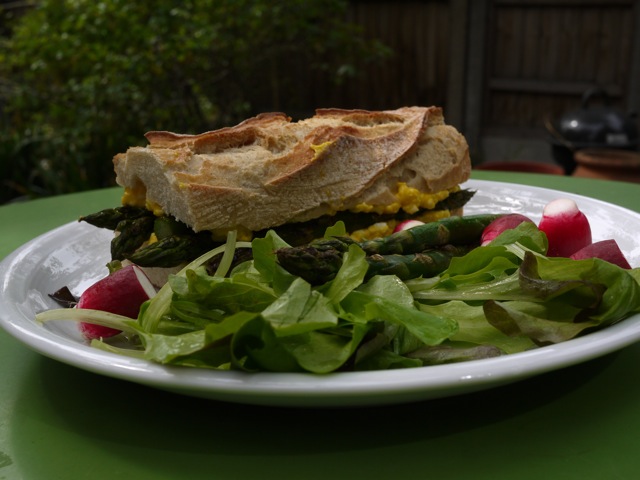It’s late spring (well it was when I wrote and it was published, we’ve now just edged into summer) and a time many of us associate with lamb, in fact, it’s common to think of lamb as a traditional dish for Easter. A moment to pause and think about this should make us wonder why? Easter can be as early as 22 March and as late as 25 April; and we mostly all know that spring is when lambs are born so how are these lambs old enough to be ready to eat by Easter? Well they aren’t. The lamb that is marketed early was born in autumn and there are some breeds where this is the norm (primarily Dorset breeds such as Down, Horn or Poll). But not that many so unless you are sure of your source you might be paying a premium price for lamb that has been ‘encouraged’ to lamb in the autumn and then had an indoor life fed on concentrated feeds such as soya pellets. Not perhaps as natural as you might hope. Like almost anything in food it pays to know the provenance of what you are buying including when things are truly in season and what might have been involved to bring them to you essentially ‘out of season’. So the majority of British lamb is not yet ready for the table but will start to be when we get near the end of June and into July, at its best by September when it will really pays to explore different breeds that have been grazing outdoors on their local flora for a good 5-6 months; then you’ll be able to taste the effects of grazing on salt marshes or moorland, highland or lowland.

But what to do until then, after all it feels like it should be time to have some lamby dishes whether British inspired or from further a field. Well you can seek out some lamb from breeds that do naturally lamb in the autumn, as the meat will be top notch right now. You could simply wait and bide your time. You could buy New Zealand lamb; no don’t do that! Although excellent from good producers on its home soil it’s almost impossible to know in the UK whether you are buying good, indifferent or poor quality. Or you could try British reared hogget or mutton instead. Technically a hogget is a sheep between 1 and 3 and mutton is 3+ years old.
Ah mutton yes. I know I’ve immediately conjured pictures of old good-for-nothing stringy over cooked meat, Mrs Beeton and over boiled vegetables! Of course this is not the case mutton is as delicious as lamb, just different. As Hugh Fearley-Whittingstall points out (in his seminal The River Cottage Meat Book, highly recommended for all matters meaty) “mutton is to lamb, as beef is to veal”, both have a place but one is fuller in flavour the other more delicate. It seems that somewhere along the way we have lost this notion of mutton as delicious and now we even use lamb to make hot-pots, or ragouts. There has been a shifting in attitude since 2004 when Hugh first wrote his book with the likes of Farmer Sharp championing mutton with chefs and the public alike. But essentially mutton is still seen as the speciality and lamb the ‘regular’ option. This makes no real sense, many recipes that call for lamb use robust flavours that will simply drown the delicate flavour of even the best quality lamb, and the lack of sufficient fat means that lamb actually won’t respond well to some of the cooking methods. Best then to save the lamb for a special treat, cooked simply at its prime from July to September and instead invest in some mutton for your summer inspired dishes.
Good mutton doesn’t have to be cooked until its gray either (or indeed ever) a joint of hogget or ‘young’ mutton (3-4 years old) will work well roasted or barbecued but still left pink, it has a good balance of sweet fat to meat meaning it will be more succulent than pretty much any lamb would be right now. So for the next month (and most of the rest of the year) while we wait for lamb to really be in its prime why not try a cut of mutton?
Boned, butterflied leg or shoulder of mutton
½ – 1 leg or shoulder of mutton
½ bottle of red wine (right now its English wine week so you might want to track down an English red)
4 large sprigs of fresh rosemary
6 black peppercorns
1 – 2 tbsp oil (I use extra virgin rapeseed)
peel of an orange or lemon (only the outer surface not the pith, easiest done with a sharp potato peeler)
- If your butcher hasn’t already then bone the leg or shoulder and open it out to create one large flat piece of meat. Place the meat skin side down and slash the meat side in a criss-cross pattern to a depth of about 1cm at about 4cm intervals.
- Pout the wine in a dish big enough to fit the meat in flat, add the peppercorns, rosemary sprigs and orange peel. Lay the meet in the dish meaty side down and leave to marinate for at least a couple of hours.
- When ready to cook heat a barbecue or cast iron grill pan until hot. Remove the meat from the marinade and pat off any excess. Leave the peppercorns, rosemary and peel in the wine for now.
- Place the meat on the barbecue or griddle skin side down to start and turn regularly to cook from both sides until it’s done to your liking. This can take anything from about 25-45 minutes depending on the thickness of the meat and how pink you want it to be.
- While it’s cooking reduce the wine on a fast boil (remove the other ingredients) to concentrate the flavours add a tablespoon or two of oil near the end and stir vigorously to help the mix emulsify and create a glossy slightly thicker sauce.
- Slice the meat into pieces about ½ cm wide and serve with the sauce, a green salad or steamed vegetables and a big bowl of buttered new potatoes.
You can find out more about mutton and places to buy at www.muttonrenaissance.co.uk
This article was first published in Francoise Murat & Associates newsletter.





